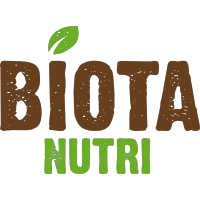In vertical farms all the production factors can be precisely controlled, making that we can precisely control the growth, development and quality of the crops. LEDs play a crucial role in this control. A number of examples will be presented on how to use different light spectra and intensities to control the growth, development and quality of plants and harvested products.
Optimization of light should be balanced with optimization of all other growth factors (e.g. temperature, CO2, humidity, plant spacing, water, nutrients, etc). Sensors, simulation models and artificial intelligence play an important role in optimizing the production systems and can ultimately be used to realise autonomous production systems.
Interview with Leo Marcelis
What drives you?
I am passionate about understanding the functioning of plants and how we can control them in controlled environment agriculture (vertical farms and greenhouses). I want to improve quality and yield of plants, while improving sustainability and profitability.
Why should the delegate attend your presentation?
It is fascinating to understand the responses of plants to growing conditions.
What emerging technologies/trends do you see as having the greatest potential in the short and long run?
It is in particular important that the different type of technologies are aligned with each other. we know already a lot about use of LED lighting for plants, but there is still even more to gain to make more efficient use of the lights, by dynamically adapting the light (and other environmental conditions) to the status of the plant. Gradually we will move towards an autonomous control of the crop by using a combination of sensors, models, and artificial intelligence tools.
What kind of impact do you expect them to have?
New technologies enable a full control of the plant, resulting in higher yields, quality, and sustainability.
What are the barriers that might stand in the way?
For large scale expansion of vertical farming it is important to reduce the energy demand and reduce cost price. Improving the light use efficiency of plants as well as to quality of the plant are key factors for success.
“Special Quote”
Light is the most important growth factor in a vertical farm. However, optimization of light makes only sense if it includes an optimization of all growth conditions.
Leo Marcelis grew up on a farm. He studied Horticulture at Wageningen University. Since 1987 he worked for several departments of Wageningen UR. Throughout the years he researched many aspects of growth and functioning of horticultural plants grown in greenhouses and vertical farms. His research contributes to sustainable horticultural production while improving crop production and quality; this includes saving of energy, crop monitoring, crop modelling, efficient use of (LED)light, efficient use of water and nutrients.
Wageningen University is a leading university in the field of Agriculture. The chair group Horticulture and Product physiology is the only university group in the Netherlands that is focussed on horticulture and holds a strong position in horticultural research and education in Wageningen. The role of the Horticulture and Product Physiology group (HPP) is to foster the science of the supply chain for crops produced under protected cultivation. The focus of the group is on greenhouse horticulture, vertical farming and the post-harvest quality of products produced in greenhouses and vertical farms as well as the post-harvest quality of tropical fruit.
Leo Marcelis is a speaker at the 2021 edition of the Vertical Farming Conference.

